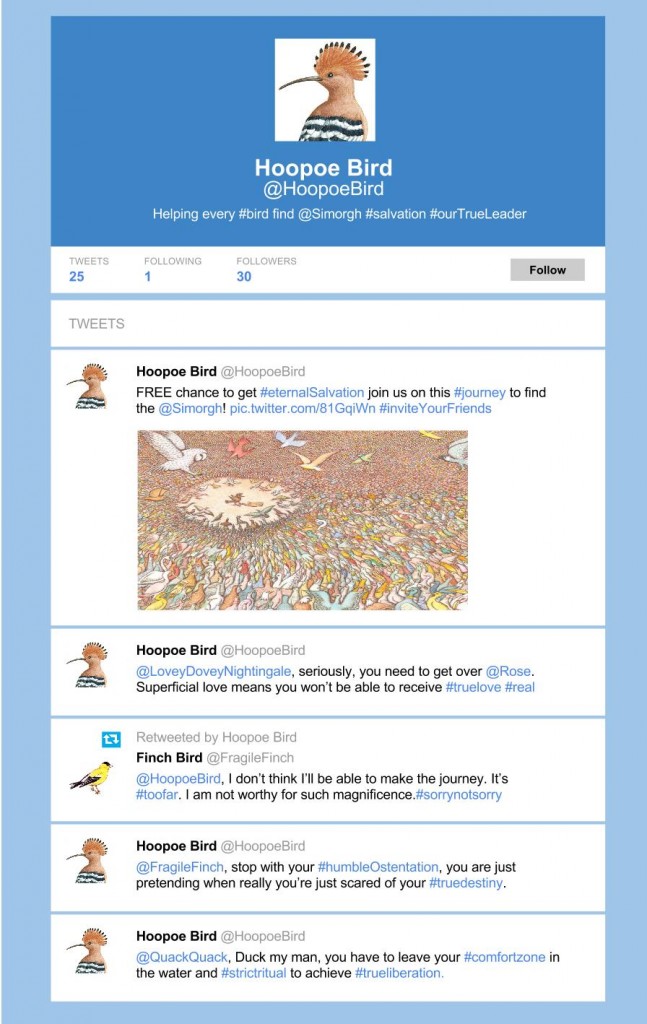The Twitter of the Birds (Week 10)
May 7th, 2014
Since I’m a computer science concentrator, I’ve been meaning to find different ways to combine the creativity of computer science to the response blogs that we are writing for this class. When we came across the story of The Conference of the Birds, I really enjoyed the allegorical writing of the Persian poet and wanted to find a 21st century way to represent his words. Thus, I created a fake screenshot of the “Hoopoe Twitter,” as seen below.
I felt like this is a fun and creative way to approach the story. First, there is the obvious connection between “Twitter” and “tweeting” and a story about birds. Then, Twitter is a great platform because there is the ability for the Hoopoe both to individually message each of the birds as well as broadcast the announcements across the world, calling out for all to follow. This solidifies the position of the Hoopoe as the Messenger, the leader of the birds in allowing them to find their own salvation. And since Twitter only allows 140 characters (a loose limit on this creative piece), the language of the Twitter feed is more accessible to the general public and makes the whole story more modern and real.
In setting up the Twitter feed, I decided to pick a flattering picture of the Hoopoe bird that I found online, drawn in pencil and in the style of the Persian mystical poetry. The username HoopoeBird is fairly generic, but the tag line highlights his main goal as a Messenger (with funny hashtags of course!) The number of Tweets was randomly generated, but the fact that the Hoopoe is following just one shows that he is following the One True God, and the fact that thirty are following the Hoopoe shows that these are the thirty birds that are following Hoopoe on this spiritual journey documented by the Conference of the Birds text.
For each of the tweets, I decided to focus on a few of the “attachments” and “vices” of the birds that are brought up in the story. This section was interesting because the Hoopoe bird was like a shaykh going through each of his potential disciples and speaking about their weaknesses to help strengthen them. It is also an interesting section to allow the readers to assess whether they themselves fall into these earthly wonderings which may impede their path to true spiritual realization. This also allows for the individual conversations that can happen on Twitter for each of the birds while publicizing the answer for all future disciples to hear.
The three examples presented include the nightingale, who was madly in love with the rose, distracted by superficial love and unable to find the One True Love of God. Another is the Finch, who claims that he is too incapable, will be too exhausted, is unworthy, which the Hoopoe dismisses as being hypocritical with “humble ostentation.” And the final example, the duck is comfortable in his current surroundings in the water, which can be alluded to ritualistic purity, but comfort and rigor may in return make it more difficult to be spontaneously spiritual and divine.
This is a nice framework that can be applied to all of the other birds later on in the story and would be a cool, modern way to make the ancient words a relatable reality.

Leave a Reply